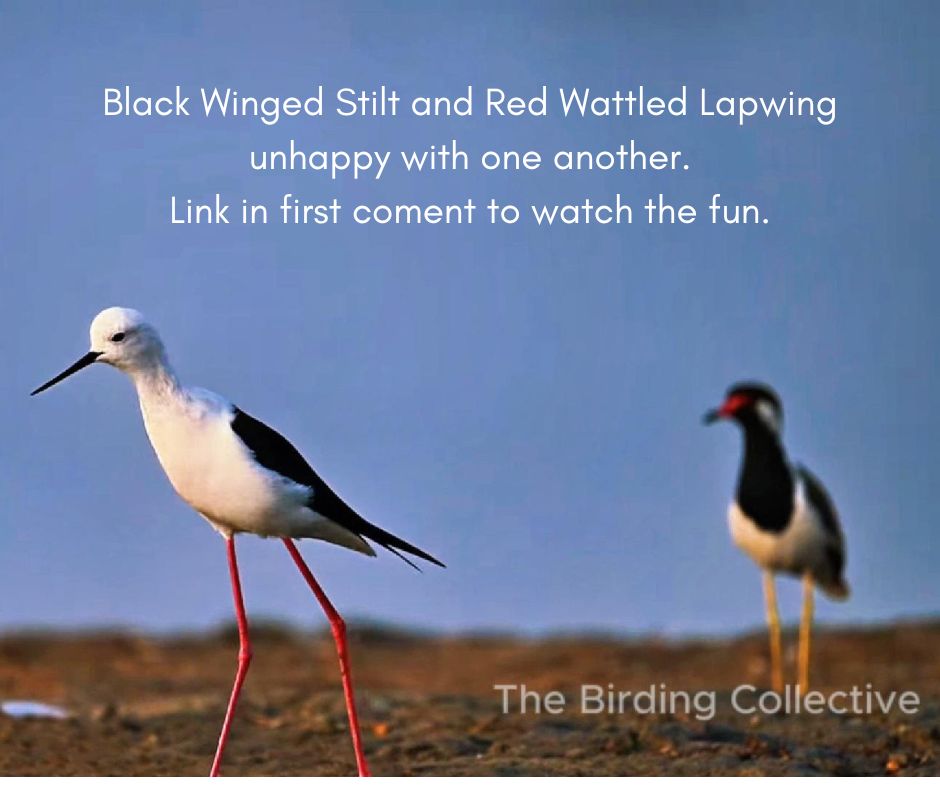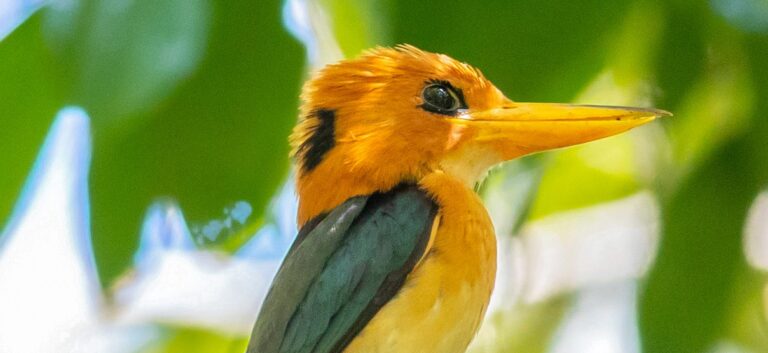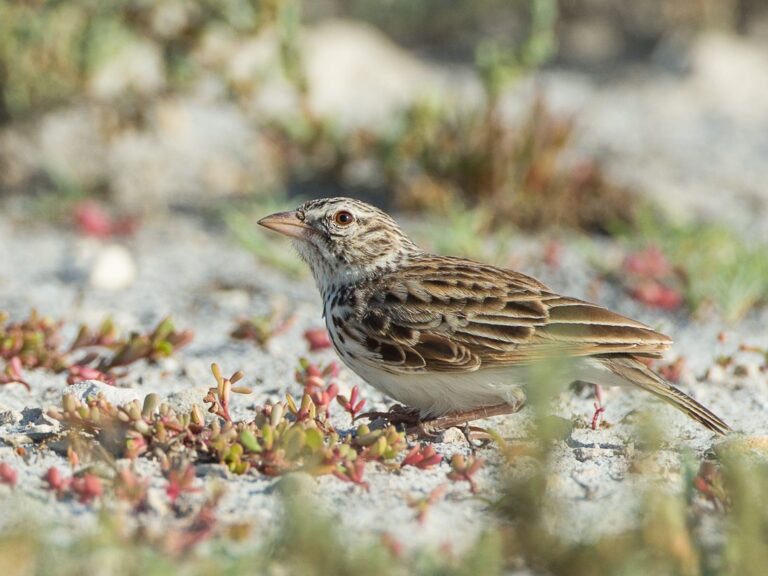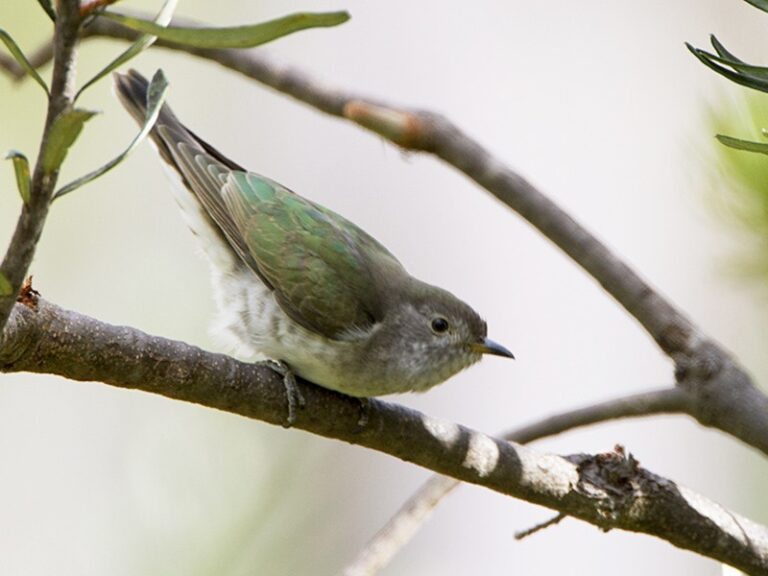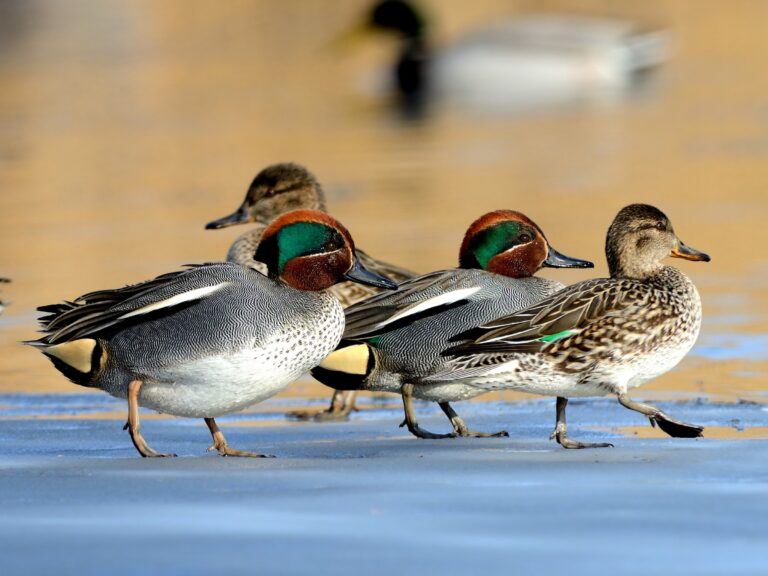Black Winged Stilt and Red Wattled Lapwing Compete for Territory
Watch the two wetland birds competing for territory as they engage in their natural behaviors. The interactions between these species not only highlight their instinctual drives, particularly how birds compete for territory, but also offer insights into their adaptations for survival in their respective environments. Observing these behaviors in situ can be a thrilling experience for bird watchers and naturalists alike.
The Red-wattled Lapwing (Vanellus indicus) is a striking wader found across South Asia, West Asia, and Southeast Asia. It features red facial wattles, a black-tipped red bill, and yellow legs. Preferring wetlands and open landscapes, it feeds on insects and small invertebrates. Known for its loud “did-he-do-it” call, it is highly territorial during breeding. The lapwing’s behavior during the breeding season is particularly noteworthy, as males engage in elaborate displays to attract females and defend their nesting territories against intruders. This competition for territory is essential for their survival and understanding these displays can provide a richer understanding of the species’ mating rituals and social structures.
How Birds Compete for Territory
In areas where the Red-wattled Lapwing and Black-winged Stilt coexist, competition for food and nesting sites can lead to interesting interspecies dynamics. The lapwing’s aggressive behavior may deter other birds from foraging in its territory, while the stilt’s adaptability allows it to exploit various feeding strategies, from wading into shallow waters to picking insects off the ground. These interactions highlight the importance of understanding ecological balance and resource competition in avian habitats.
Birdwatchers visiting wetlands where these species are found often describe the experience as exhilarating. Setting up observation points and using binoculars or spotting scopes allows for an unobtrusive viewing experience. Field guides can be helpful in identifying the subtle differences between these two species, especially when they are seen in close proximity. Additionally, taking notes on their behaviors, calls, and interactions can enhance the enjoyment and educational aspect of birdwatching.
Understanding the environmental factors that influence the behaviors of the Black-winged Stilt and Red-wattled Lapwing is critical for conservation efforts. Habitat loss due to urban development and agriculture poses a significant threat to wetland ecosystems. Conservationists are working to protect these habitats through various means, including establishing protected areas, promoting sustainable land use practices, and raising public awareness about the importance of wetland preservation. Engaging local communities in conservation efforts can create a sense of ownership and responsibility towards these vital ecosystems.
As these birds compete for territory, observers can witness fascinating interactions and displays of dominance. These behaviors often include aggressive posturing, vocalizations, and even physical confrontations. Each species has its unique strategies for territorial defense, influenced by factors such as habitat, availability of resources, and population density. Understanding these dynamics can enhance our appreciation of the intricate relationships between these avian competitors.
The Black-winged Stilt (Himantopus himantopus) is a long-legged wader found in wetlands across Europe, Asia, and Africa. It features black and white plumage, a long black bill, and pink legs. The species feeds on insects and crustaceans, nesting on the ground near water in small colonies. The Black-winged Stilt’s breeding behavior is fascinating, as they often engage in cooperative breeding, where multiple adults help to raise the young. This social structure not only enhances the survival of the chicks but also provides opportunities for learning and resource sharing among the adults.
